As considered in part 1, employees need to see safety written into the fabric of a company’s policy and processes. Obviously having it in print and translated aren’t enough. Employees need to see real commitment and action behind the words. There must be high expectations and accountability. “Do as I say, not as I do,” undermines the importance of working safely. Consider the following recommendations for integrating safety into your company:
- Integrate safety expectations into policies, procedures, and guidelines
- Safety priorities must become company priorities
- Failure may lead to a double standard where safety is ignored whenever time and budgetary pressures come into play.
- Inclusion of appropriate safety language into policy and procedure, when applicable
- Employees see that the company values safety
- Employees see that company values them
- Allocate adequate resources for properly implemented safety policies and procedures
- Safety priorities must become company priorities
Clearly, just having a written plan is insufficient. A written plan without action will send the opposite message to your employees’ ears. They will conclude that they really are dispensable. When your actions speak louder than words, employees will feel valued.
- Diversify safety planning
- Include your worker with his boots on the ground in safety teams or committees
- Gather people from different groups to discuss project-related safety strategies
- Employees in different groups and from different cultural backgrounds should have the opportunity to communicate about project-specific safety issues, like:
- architects
- engineers
- construction workers
- subcontractor managers
- human resource employees
- Limited English proficient members of the workforce (Spanish, Russian, German)
All these different groups of people have different perspectives on project-related safety and strategies and ideas for managing them. Important relationships are built when a diverse group is encouraged to collaborate. They develop trust in each other; safety is the glue that binds them all together. It is the common value that they share.
- Safety training
- Plan for and set aside funds for regular
training of both supervisors and workers
- Know how to work safely
- Understand that they share responsibility for safety.
- Supervisor training focus
- Hazard identification
- Leadership
- Positive communication skills
- Safety cannot be compromised
- Employee training focus:
- Proactively identify safety hazards
- Reporting those hazards immediately
- Plan for and set aside funds for regular
training of both supervisors and workers
- Safety meeting topics
- Discuss safety at jobsites
- daily thoughts and reminders
- weekly briefing
- Train supervisors to communicate safety topics-
with employees throughout the day.
- Educational links via text message
- E-mail other materials
- Printed book of Tool Box Talks
- Have supervisors review:
- Potential hazards
- Near Misses (close calls)
- Commend good safety protocol they may have observed
- When hazards are identified:
- Address the issues as soon as possible
- Explain
how the hazard:
- Was fixed
- Will be corrected
- Was created
- Discuss safety at jobsites
- Reassess your safety program periodically
- Ensure no conflict with your stated safety values, productivity, and budget goals
- gather data to uncover hidden problems.
- Review accident records
- Review near misses
- Perform safety audits
- Conduct
safety culture surveys
- Do informal interviews with employees
- Form safety focus groups
- Learn what safety perception your employees have
- Incorporate metrics to track your progress
- Incorporate language and immigrant culture
in your company safety plan
- Determine the principal languages best understood by your employees
- Ascertain if your immigrant workforce is literate before investing in safety translation
- Spanish is the largest minority language spoken in the US; but there are many other language clusters from one company to another
- Account for immigrant bias and beliefs by using a confidential survey
So far, we have considered how management example and merging safety into the company programs and policies relate to safety culture. Next piece discusses accountability to ensure a strong safety environment. As you probably already noticed, I spoke a lot about that anyway.


